5 Picture Books that Honor and Celebrate World Refugee Day
World Refugee Day falls on June 20th. This day, and the surrounding weeks, are a time to recognize and celebrate the resilience, strength, and contributions of refugees worldwide. Picture books are a powerful medium to educate young readers about the experiences of refugees, fostering empathy and understanding. We have curated a short list of exceptional picture books that honor and celebrate the lives and contributions of refugees.
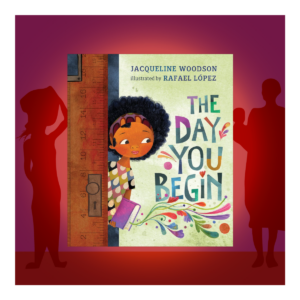 “The Day You Begin” by Jacqueline Woodson, Illustrated by Rafael López
“The Day You Begin” by Jacqueline Woodson, Illustrated by Rafael López
This beautiful book tells the story of a young girl named Angelina who feels different from her classmates because of her background. Through her journey, she learns to embrace her uniqueness and share her story with others.
“The Day You Begin” highlights the feelings of uncertainty and isolation that many refugees experience. Jacqueline Woodson’s lyrical text combined with Rafael López’s vibrant illustrations create a powerful narrative that encourages readers to appreciate diversity and the strength that comes from sharing our personal stories.
Classroom Suggestion
Have students create their own “All About Me” books, celebrating their unique backgrounds and experiences. This activity promotes self-expression and understanding among classmates.
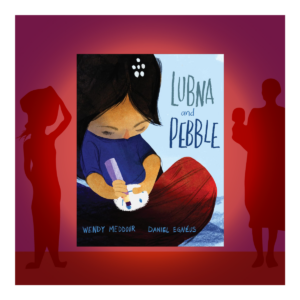
“Lubna and Pebble” by Wendy Meddour, Illustrated by Daniel Egnéus
Lubna, a young refugee, finds comfort in a pebble she finds on the beach. As she navigates life in a refugee camp, her pebble becomes her confidant and source of strength. The story beautifully captures her friendship with another child, Amir, who also finds solace in the pebble.
This touching story gently introduces young readers to the emotional realities of life in a refugee camp. It emphasizes the importance of friendship and finding comfort in small things during challenging times.
Classroom Suggestion
Try this suggestion as a way to celebrate World Refugee Day. Encourage students to bring in or find their own “special objects” and share why they are important to them to celebrate. This can lead to discussions about resilience and the things that provide comfort in difficult times.
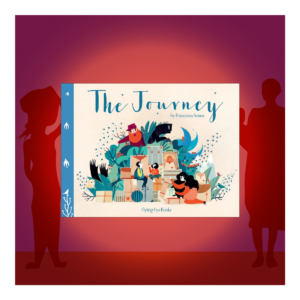 “The Journey” by Francesca Sanna
“The Journey” by Francesca Sanna
“The Journey” follows a family forced to leave their home due to war. The book depicts their perilous journey towards safety with powerful, evocative illustrations and narrative.
Francesca Sanna’s illustrations vividly convey the hardships and hopes of refugees. This book provides a window into the difficult decisions and dangers faced by those fleeing conflict, making it a poignant tool for teaching empathy and understanding.
Classroom Suggestion
Have students create a story map of the family’s journey, discussing the challenges and emotions they might have faced at each stage. This helps students understand the refugee experience on a deeper level.
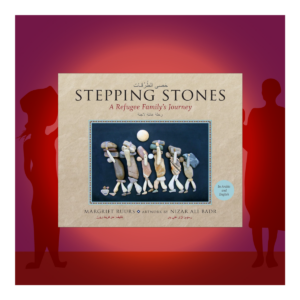
“Stepping Stones: A Refugee Family’s Journey” by Margriet Ruurs, Illustrated by Nizar Ali Badr
Inspired by the artwork of Syrian artist Nizar Ali Badr, “Stepping Stones” tells the story of a family’s flight from their war-torn country. The book’s text is presented in both English and Arabic, enhancing its accessibility and cultural richness.
The unique stone artwork brings the refugee experience to life powerfully and tangibly and opens up conversations about art and expression in different cultures. The dual-language format also celebrates linguistic diversity and fosters inclusivity.
Classroom Suggestion
Introduce students to the art of storytelling through visual arts this World Refugee Day, and deepen their connection to a story of their own by creating ‘stone’ or collage artwork to depict a story that is important to them. You might use actual stones, but could easily substitute cut cardboard, cardstock, or other materials.
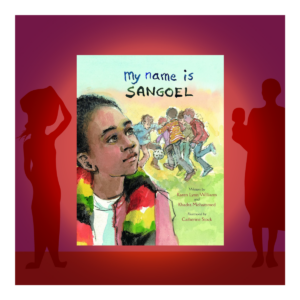 “My Name is Sangoel” by Karen Lynn Williams and Khadra Mohammed, Illustrated by Catherine Stock
“My Name is Sangoel” by Karen Lynn Williams and Khadra Mohammed, Illustrated by Catherine Stock
Sangoel, a young refugee from Sudan, struggles to adjust to life in America. He finds a creative way to help his new classmates and teachers pronounce his name correctly, maintaining his identity while adapting to a new culture.
This book addresses the importance of names and cultural identity, a significant aspect of the refugee experience. It encourages respect for diversity and self-advocacy in young readers.
Classroom Suggestion
Host a “Name Celebration Day” in which students share the origins and meanings of their names. Some students will know or be able to ask a family member or guardian, but you can support others with brief research using sites such as Names.org. This activity fosters respect for cultural diversity and highlights the importance of names in personal identity.
These books provide a valuable resource for educators to introduce students to the experiences and contributions of refugees, but they are just the start. By incorporating these stories into the classroom, educators can foster empathy, understanding, and appreciation for the diverse backgrounds that enrich our communities. Let’s use World Refugee Day and the entire month of June as an opportunity to begin conversations about the stories, struggles, resilience, and achievements of refugees worldwide.



